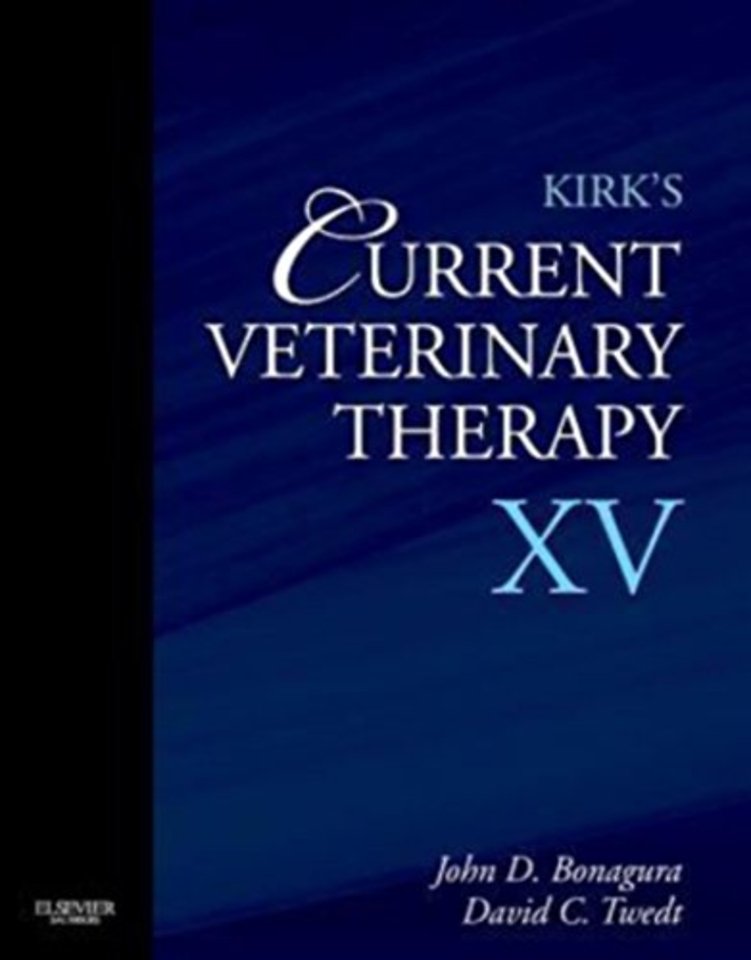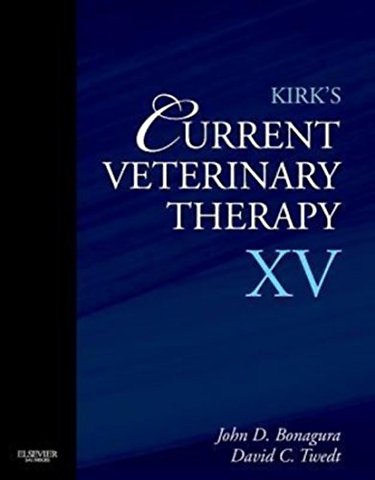Kirk's Current Veterinary Therapy XV
Gebonden Engels 2014 9781437726893Samenvatting
Written by todays leading experts, Kirk's Current Veterinary Therapy, Volume XV keeps you completely current with the latest in disease management for dogs and cats. It uses a clear and practical approach to medical disorders; the typical chapter includes both a brief guide to diagnosis and a detailed discussion of therapy. Youll gain quick access to information such as critical care; infectious, toxicologic, and dermatologic disorders; and diseases of the gastrointestinal, cardiovascular, respiratory, urinary, reproductive, neurologic,and ophthalmologic systems. From editors John Bonagura and David Twedt plus hundreds of expert contributors, Kirk's Current Veterinary Therapy enhances your skills in evidence-based treatment planning.
"For the practitioner who wants to keep abreast of current therapies for a wide range of topics, … CVT is the perfect reference ." Reviewed by: Ryan Ong, WAVES Veterinary Hospital on behalf of Australian Veterinary Hospital, March 2015 Authoritative, easy-to-read coverage includes a brief approach to diagnosis with detailed discussions of the latest therapies. An organ-system organization and a convenient index make it easy to find solutions for specific disorders. Treatment algorithms help you manage patients with difficult medical problems. A handy Table of Common Drugs, updated by Dr. Mark Papich, offers a quick reference to dosage information. 365 illustrations depict the pathophysiologic basis for therapy or show the management of a defined condition. A companion website includes valuable information still relevant from CVT XIV, an index, and drug formulary, all fully searchable; a collection of 300 images; references that link to PubMed; and clinical references on laboratory test procedures and interpretation, normal reference ranges, conversion tables, and more. Concise chapters are only 2-5 pages in length, saving you time in finding essential information. Expert contributors and editors provide scientific, up-to-date coverage of clinically useful topics, including broad, traditional, and controversial subjects. References indicate related material from earlier volumes of Kirk’s Current Veterinary Therapy. NEW chapters cover the most important, emerging information on current diagnostic, treatment, and preventive challenges in today’s veterinary practice. A new section on feline and canine nutrition covers important issues in nutritional health. 50 new chapter authors join hundreds of expert international contributors, all of whom are leading authorities in their fields. NEW! Availability as Pageburst ebook allows you digital access to this volume along with your library of other Elsevier references.
Specificaties
Lezersrecensies
Inhoudsopgave
Rubrieken
- advisering
- algemeen management
- coaching en trainen
- communicatie en media
- economie
- financieel management
- inkoop en logistiek
- internet en social media
- it-management / ict
- juridisch
- leiderschap
- marketing
- mens en maatschappij
- non-profit
- ondernemen
- organisatiekunde
- personal finance
- personeelsmanagement
- persoonlijke effectiviteit
- projectmanagement
- psychologie
- reclame en verkoop
- strategisch management
- verandermanagement
- werk en loopbaan

